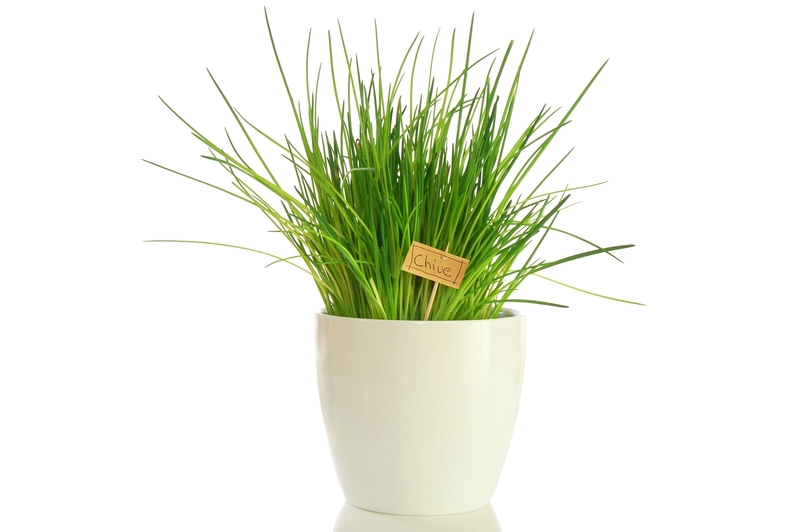Crafting a Garden Sanctuary Sheltered from Wind
Posted on 10/09/2025
Crafting a Garden Sanctuary Sheltered from Wind: Your Guide to a Peaceful Outdoor Escape
A garden sanctuary is more than just a collection of plants; it's a peaceful retreat where you connect with nature and recharge your mind and body. However, wind can transform even the most beautiful gardens into inhospitable zones, damaging plants and stealing away serenity. How do you create a wind-sheltered garden sanctuary that feels like a private haven? This comprehensive guide will walk you through every aspect of designing, planting, and maintaining a wind-protected oasis, so your outdoor space remains a tranquil, thriving escape in any weather.

Why Wind Shelter Matters in Your Garden
Why go to all the effort of shielding your garden from wind? Whether you live on a breezy coastline, an exposed hillside, or simply experience unpredictable gusts, wind:
- Stresses and damages plants, causing broken stems, torn flowers, and stunted growth
- Accelerates evaporation, drying out soil and plants quickly
- Cools air temperature, making it less comfortable for relaxation and entertaining
- Interferes with outdoor enjoyment, making dining, reading, or lounging unpleasant
- Blows away soil, mulch, and lightweight decorations
Creating a wind-resistant garden sanctuary not only protects your plants but also enhances your comfort, privacy, and property value. Let's explore expert strategies to design a beautiful, sheltered garden retreat.
Understanding Wind Patterns in Your Garden
Before planting or building anything, study how wind moves through your property. Identifying wind patterns is crucial for effective shelter design.
- Spend time outdoors at different times of day and during various weather conditions. Where does wind enter your garden? Where is it strongest?
- Observe the effects of existing structures or trees. Do fences or sheds create swirling gusts (wind tunnels) or calm zones?
- Note prevailing wind direction in your region, especially during the windiest months.
Sketch a rough site plan to mark wind trouble spots, sheltered pockets, and focal points you'd like to protect. This knowledge will inform your garden windbreak strategies.
Choosing the Right Windbreaks: Natural vs. Structural Solutions
Windbreaks are the backbone of any wind-sheltered garden sanctuary. You can use a combination of living barriers (plants) and man-made structures. The most effective gardens utilize both, layered strategically for maximum protection.
Natural Windbreaks: Trees, Shrubs, and Hedges
Growing living windbreaks is the most aesthetically pleasing and eco-friendly solution. They:
- Filter and slow down wind without creating turbulence like solid fences can
- Add privacy, beauty, and wildlife habitat to your sanctuary
- Reduce noise and trap dust
Top choices for windbreak plants include:
- Evergreen trees and conifers: pine, spruce, cypress, fir, holly - provide year-round protection
- Deciduous shrubs in layers: viburnum, lilac, spirea, hawthorn, privet
- Bamboo (clumping varieties): fast-growing and dense, great for quick results
- Ornamental grasses: pampas, miscanthus, switchgrass - add movement and texture
Pro tip: For best results, plant multiple staggered rows of different heights and densities, mimicking the "edge" of a woodland. This "graduated" approach avoids wind whistling over or tunneling under a single row.
Structural Windbreaks: Fences, Screens, and Walls
When instant results are needed, or if space is limited, hard barriers provide immediate wind relief. Options include:
- Permeable fences and screens (lattice, slatted wood, woven willow or reed): Let some air pass through, reducing turbulence
- Masonry or brick walls: Offer complete wind barrier, but can cause powerful whipping wind on the leeward side
- Pergolas, trellises, and arbours: Train climbers (like evergreen clematis or honeysuckle) for added beauty and wind reduction
- Outdoor curtains or fabric screens: Ideal for patios and decks; adjustable and stylish
Important: Solid barriers should be used thoughtfully. Wind hitting a completely solid wall is often forced over the top and down, creating a turbulent "wind shadow" that can harm plants directly behind the structure. That's why permeable and layered screens are preferred for most garden sanctuaries.
Strategic Sanctuary Design: Laying Out Your Sheltered Garden
Layering for Protection and Beauty
The most successful wind-sheltered gardens use layered defenses to slow and filter the wind:
- Outer windbreak: The first, tallest defense (trees, tall shrubs, fences) positioned at the edge of your property, perpendicular to prevailing wind
- Intermediate planting: Dense middling plants, large shrubs, secondary screens behind the outer windbreak
- Inner sanctuary space: The most protected zone - your patio, seating, favourite beds, or water feature - where wind has dropped to a gentle breeze
Use this multi-zone approach to create both beauty and functionality within your garden retreat.
Orchestrating Garden Zones and Microclimates
Windbreaks don't just reduce wind - they create warm, still "microclimates" that enable Mediterranean or tender plants to flourish. Consider:
- Position seating areas, water features, and outdoor dining patios within the innermost, best-sheltered spot
- Design winding paths and curved planting beds, which help deflect and dissipate wind energy (straight avenues funnel wind)
- Use raised beds or sunken "garden rooms" for added enclosure and warmth
Tip: Try planting hedges or screening plants a short distance away from hard barriers to create a buffer, reducing wind's impact on delicate zones.
Best Plants for Wind-Sheltered Sanctuaries
Even in a carefully protected garden, wind is rarely eliminated completely. Choose resilient plants that can withstand occasional gusts and add structure or movement to your sanctuary. Some top selections include:
- Compact evergreens (yew, boxwood, pittosporum) for year-round structure
- Layered deciduous shrubs (dogwood, buddleja, cotoneaster, escallonia)
- Climbing plants for vertical wind protection (ivy, clematis armandii, climbing hydrangea, star jasmine)
- Plants with flexible stems (tulips, ornamental grasses, sedum) - these "bend, don't break"
- Wind-tolerant border perennials (agapanthus, lavender, geranium, eryngium, echinops)
- Ground covers (thyme, creeping phlox, vinca) to anchor the soil and stop dust
Native plants are always winners; they have evolved to cope with your region's wind, soil, and climate conditions.
Decor and Features for a Windproof Garden Retreat
Beyond plantings and fences, the finishing touches turn your wind-sheltered garden into a true sanctuary.
- Weighty, wind-resistant furniture (stone benches, heavy timber or wrought iron)
- Sturdy pots and planters (avoid lightweight plastic that may topple)
- Garden sculptures, bird baths, and features designed for stability
- Anchored pergolas or gazebos for covered, protected seating
- Outdoor fabrics and cushions that stay in place, possibly with ties or clips
Personal touches like water features, sun dials, or wind chimes (strategically placed to avoid excessive noise) can enhance tranquility without being disturbed by the weather.
Maintenance Tips for Your Wind-Sheltered Sanctuary
Protecting your garden from wind doesn't end once planting is done. Some ongoing care tasks include:
- Regularly inspect windbreaks and structures for damage after storms, tightening fasteners and replacing damaged parts promptly
- Prune trees and shrubs to maintain density at the bottom (where wind likes to sneak in), and prevent windthrow of tall windbreaks
- Mulch planting beds to reduce evaporation and soil erosion
- Check climbing plants and tie in new growth to keep green screens in place
- Reset and weigh down pots or decor as needed after blustery days

Frequently Asked Questions About Garden Wind Shelter
- Can I build a completely wind-free garden?
It's almost impossible to block 100% of wind in an open space, but a well-designed sanctuary can reduce wind speed by 80% or more. - How tall should my windbreaks be?
Your "wind shadow" extends downwind about 10 times the height of your windbreak. For example, a 2-meter hedge can protect up to 20 meters downwind. - Are solid or slatted fences better for wind?
Slatted and lattice-style fences are preferable; they let some air through, reducing turbulence. - What if I have a small garden?
Even tiny spaces benefit from vertical screens, potted plants, climbers, and strategically placed furniture. Think layers, not bulk!
Summary: Your Path to a Wind-Sheltered Garden Paradise
Crafting a garden sanctuary sheltered from wind is a blend of science and art. By understanding wind patterns, using a combination of natural and structural windbreaks, layering plantings, and choosing resilient decor, you can transform any outdoor space into a private, tranquil retreat. Not only will your plants thrive, but you'll reclaim your garden as a space for relaxation and renewal - whatever the wind may bring.
Remember: Every garden is unique. Study your site, embrace creativity in design, and let nature guide your decisions. In time, your wind-protected garden sanctuary will become your favorite place to unwind, entertain, or simply savor the peace that only a truly sheltered haven can provide.

